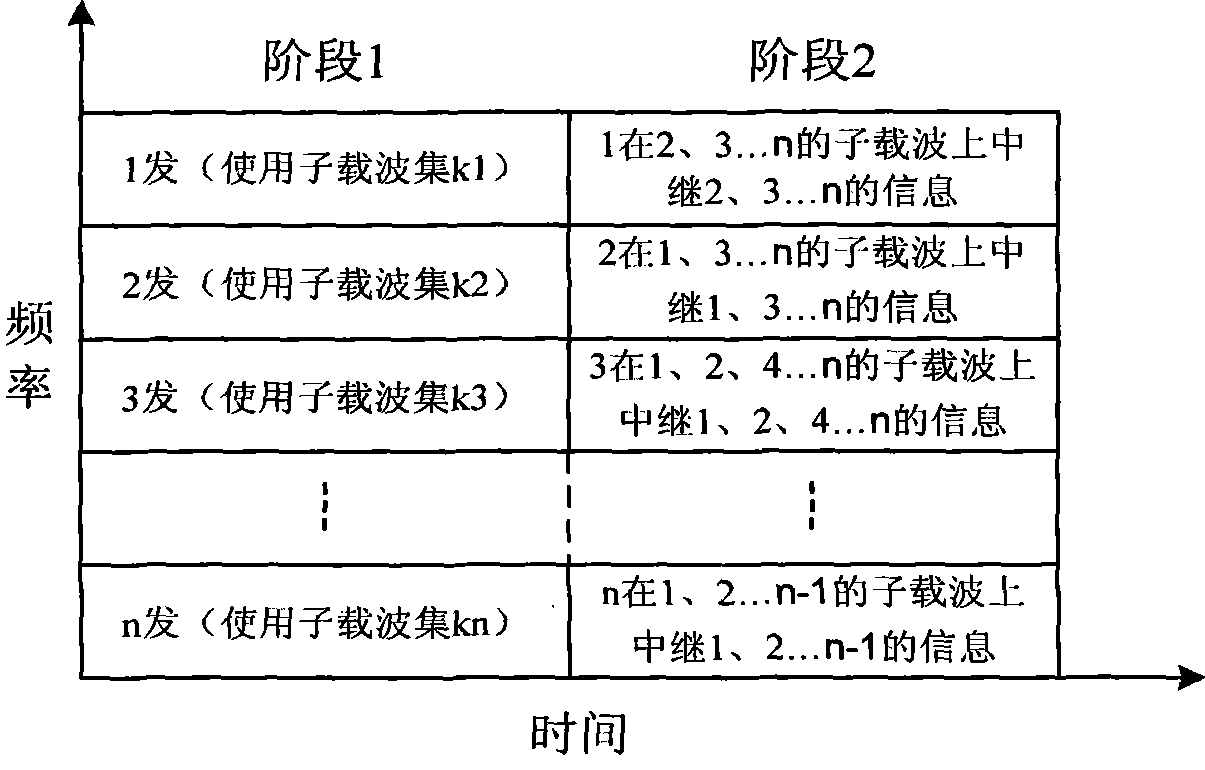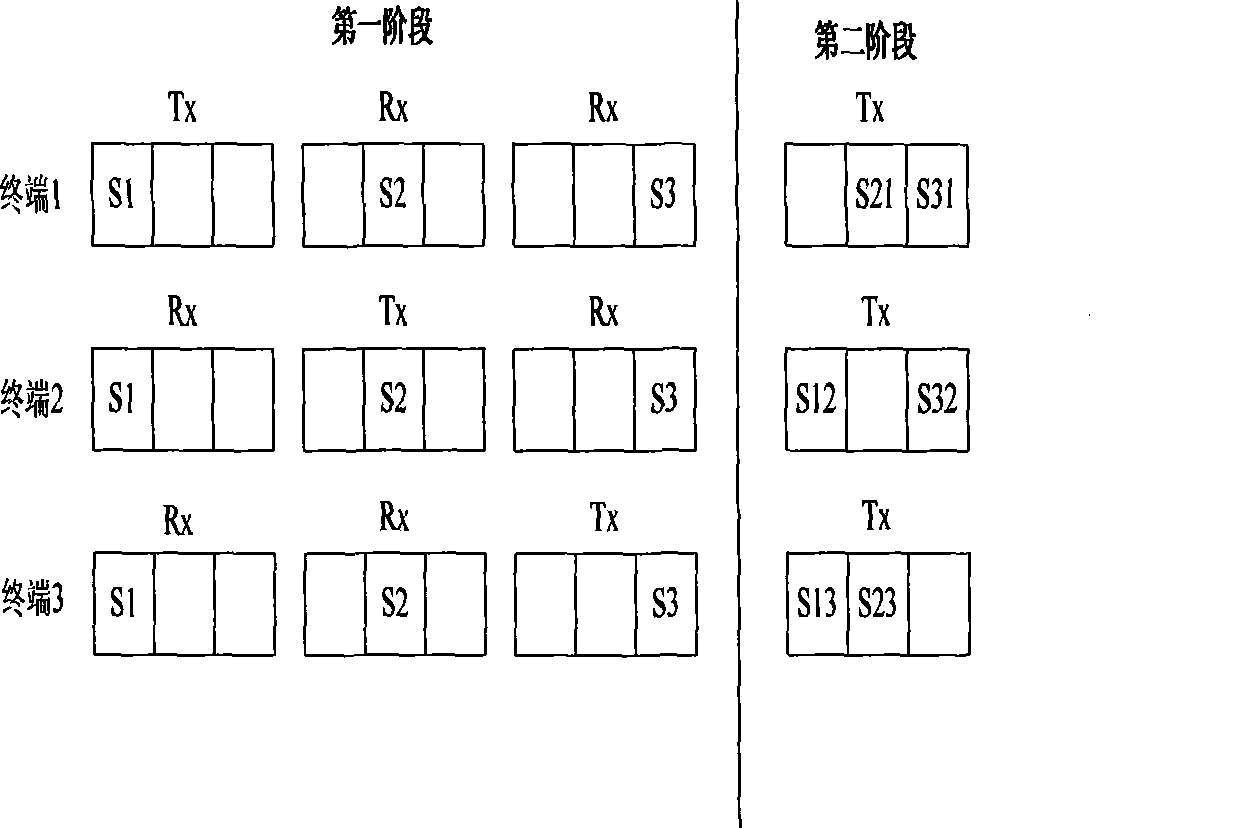Space time collaboration diversity method in OFDMA system
A cooperative diversity and space-time technology, applied in the transmission system, multi-frequency code system, digital transmission system, etc., can solve the problems of performance improvement limitation, inability to effectively use the joint decoding of the first-stage information and the second-stage information, etc. To achieve the effect of reducing the bit error rate
- Summary
- Abstract
- Description
- Claims
- Application Information
AI Technical Summary
Problems solved by technology
Method used
Image
Examples
Embodiment Construction
[0029] refer to Figure 4 , the present invention utilizes figure 1 The specific steps of space-time cooperative diversity in the shown cooperative diversity model are as follows:
[0030] Step 1: Determine the number of terminals participating in the collaboration and specify the linear dispersion code used in the collaboration.
[0031] This operation is performed by the OFDMA system. Since there are different linear dispersive codes for different numbers of transmitting end antennas or even the same number of transmitting end antennas, the OFDMA system selects the linear dispersive codes to be used after determining the number of terminals participating in cooperation for a certain terminal. In addition, in order to ensure the normal progress of the second-stage cooperation, the number of terminals selected by the OFDMA system to participate in the cooperation should be smaller than the number of potential terminals that can participate in the cooperation.
[0032] Step ...
PUM
 Login to View More
Login to View More Abstract
Description
Claims
Application Information
 Login to View More
Login to View More - R&D Engineer
- R&D Manager
- IP Professional
- Industry Leading Data Capabilities
- Powerful AI technology
- Patent DNA Extraction
Browse by: Latest US Patents, China's latest patents, Technical Efficacy Thesaurus, Application Domain, Technology Topic, Popular Technical Reports.
© 2024 PatSnap. All rights reserved.Legal|Privacy policy|Modern Slavery Act Transparency Statement|Sitemap|About US| Contact US: help@patsnap.com










